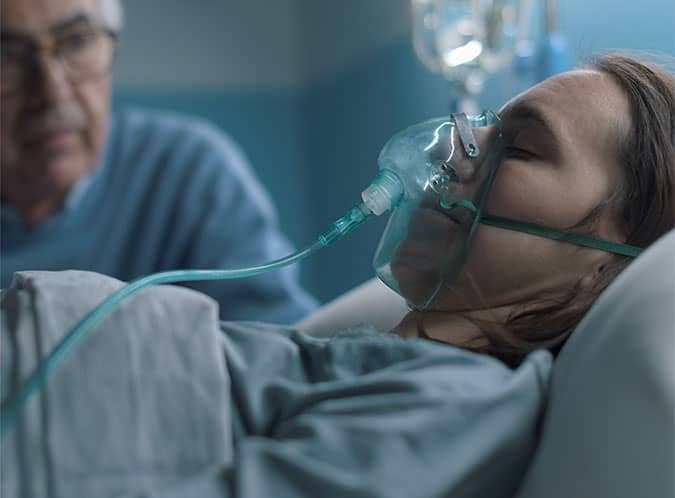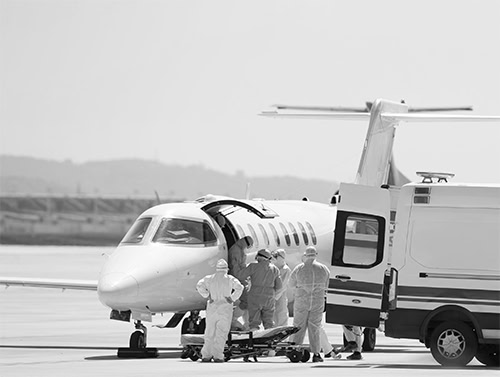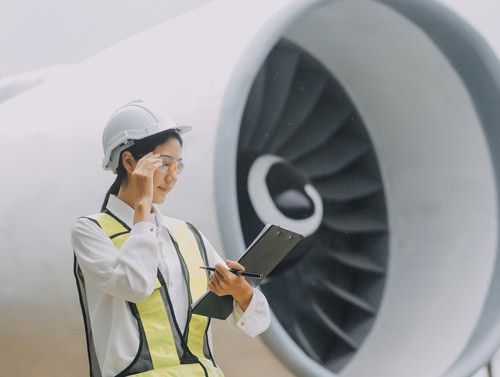Pneumonia, the inflammation of lung tissue that can affect one or both lungs, is a serious health concern worldwide. Its symptoms are persistent cough with phlegm or pus, fever, chills, and breathing difficulties. Pneumonia can be caused by various microorganisms, with Pneumococcus bacteria accounting for approximately half of all lung infections. It ranks as the second most prevalent infectious disease globally, after diarrhea.
Travel, whether for work or leisure, often exposes individuals to new stressors and climatic conditions, increasing the risk of infections. Pneumonia, with a fatality rate ranging between 3% and 5%, demands the best possible treatment for affected individuals. Commercial airlines typically insist that patients must recover adequately in the host country before regaining their ‘fit to fly’ status. Some airlines even request satisfactory exercise tolerance as a prerequisite for flying. Air ambulances, where an environment most suited to the patient’s condition can be created and controlled, are the best possible means for safe transport in such cases.
Should you fly with Pneumonia?
The lung tissue inflammation caused by pneumonia impedes oxygen absorption and transfer to red blood cells, resulting in decreased blood oxygen saturation. Severe cases manifest as high fever, coughing, and shivering, with accelerated breathing due to reduced lung capacity. Consequently, oxygen supply to the body is already compromised, even under normal circumstances.
However, this situation presents a dilemma. Pneumonia necessitates intensive medical treatment, which may not be universally available in every country. On the one hand the possibility of oxygen deficiency during the flight home and on the other the potential inadequacy in the patient’s medical care where they are staying. Fortunately, there is a solution: flying in an air ambulance, even when afflicted with pneumonia.
The risks of flying with Pneumonia
In Commercial airliners, the pressurized cabin mirrors conditions at a 2,400-meter altitude, where the air pressure is only 735 hPa (hectopascal) as compared to 1013 hPa and 914 hPa where most people live, closer to sea level. For most people, this means that the oxygen saturation in their blood decreases to about 90%. Healthy individuals may scarcely notice, unconsciously adjusting their breathing rate. However, for a person with pneumonia, with lowered oxygen saturation, due to the disease, it falls to a critical level below 90%. Attending doctors refuse to certify the patient as fit to fly and often discourage flying on commercial airliners due to the inherent risk of worsening health during the journey.
Is it still possible?
Traveling home is still possible in an ambulance aircraft with medical experts. This requires specially equipped aircraft to take a ‘sea level flight,’ maintaining ground-level air pressure by flying at a slightly lower altitude. Air Ambulance planes with pressurized cabins maintain sea-level air pressure even at cruising altitudes of 9,000 meters, ensuring the same oxygen levels as on the ground and helping the patient breathe better.
While some air pressure fluctuations may occur during ascent and descent, they can be compensated for by providing additional in-flight oxygen. These aircraft are equipped with state-of-the-art monitoring and care equipment, overseen by a team of medical professionals. Patients can receive respiratory support if needed, further ensuring their safety during long-haul travel. This specialized approach enables individuals, even those requiring intensive care, to return to their home country safely.
For further information on ambulance flights and air travel choices for individuals dealing with pneumonia or other medical conditions, procedures, costs, or planning Bluedot team is at your service 24/7. For all inquiries, please don’t hesitate to reach out to us via email at mail@bluedotassist.com or connect with us through our 24/7 support line via call or WhatsApp chat at +971 551881441.



